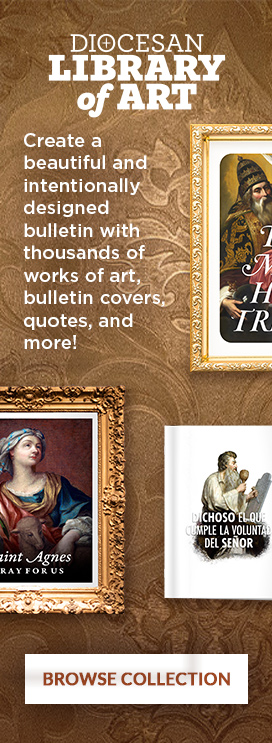St. John the Baptist is the model of simple evangelization: he understands what God is currently doing and asking of His People, and he testifies to what he has experienced to point to God.
John uses an image that was very familiar to the Jews of that time, and helps them see that that image is now finding its full meaning in Jesus: the Lamb of God.
We might easily forget that God required the Jews to sacrifice a lamb TWICE A DAY to expiate the sins of the people. This sacrificial lamb was a symbol of the price to be paid for sin. John is pointing out that Jesus will pay the price for our sin.
The primary holy day of the Jews was Passover, in which each family sacrificed and ate a lamb to recall their liberation from slavery in Egypt, and how those who marked their doors with the blood of this lamb were spared from the death inflicted on the firstborn of all the Egyptians and their animals. This Passover lamb signified God’s merciful and saving love. John is pointing out that Jesus is God’s merciful and saving love in the flesh.
Finally, the Messiah was foretold by the Prophets to be a lamb who went silently to the slaughter, to take the sins of the people on himself and wash them away. John is pointing out that Jesus is the Messiah who will take away the sins of the world. And this is what we proclaim at every Mass, right before we receive him in Holy Communion: “Behold the Lamb of God, who takes away the sins of the world!”
As we continue to rejoice in the coming of our Savior in the flesh, let us repeat the Responsorial Psalm for this week throughout our day: “All the ends of the earth have seen the saving power of God.”
San Juan Bautista es el modelo de evangelización sencilla: comprende lo que Dios hace y pide actualmente a su pueblo, y da testimonio de lo vivido para señalar a Dios.
Juan utiliza una imagen que era muy familiar para los judíos de esa época y les ayuda a ver que esa imagen ahora encuentra su pleno significado en Jesús: el Cordero de Dios.
Podríamos olvidar fácilmente que Dios exigía que los judíos sacrificaran un cordero DOS VECES AL DÍA para expiar los pecados del pueblo. Este cordero sacrificial era un símbolo del precio a pagar por el pecado. Juan está señalando que Jesús pagará el precio por nuestro pecado.
El día santo principal para los judíos era la Pascua, en la que cada familia sacrificaba y comía un cordero para recordar su liberación de la esclavitud en Egipto, y cómo los que marcaban sus puertas con la sangre del cordero se salvaban de la muerte infligida al primogénito de todos los egipcios y sus animales. Este cordero pascual significaba el amor misericordioso y salvador de Dios. Juan está señalando que Jesús es el amor misericordioso y salvador de Dios encarnado.
Finalmente, los profetas predijeron que el Mesías sería un cordero que iría silenciosamente al matadero, para tomar sobre sí los pecados del pueblo y eliminarlos. Juan está señalando que Jesús es el Mesías que quitará los pecados del mundo. Y esto es lo que proclamamos en cada Misa, justo antes de recibirlo en la Sagrada Comunión: “Éste es el Cordero de Dios, el que quita el pecado del mundo.”
Mientras continuamos regocijándonos en la venida de nuestro Salvador en la carne, repitamos el Salmo Responsorial de esta semana a lo largo de nuestro día: “Los confines de la tierra han contemplado la victoria de nuestro Dios”.
 Kathryn Mulderink, MA, is married to Robert, Station Manager for Holy Family Radio. Together they have seven children (including Father Rob), and seven grandchildren. She is President of the local community of Secular Discalced Carmelites and has published five books and many articles. Over the last 30 years, she has worked as a teacher, headmistress, catechist, Pastoral Associate, and DRE, and as a writer and voice talent for Catholic Radio. Currently, she serves the Church by writing and speaking, and by collaborating with various parishes and to lead others to encounter Christ and engage their faith. Her website is www.KathrynTherese.com
Kathryn Mulderink, MA, is married to Robert, Station Manager for Holy Family Radio. Together they have seven children (including Father Rob), and seven grandchildren. She is President of the local community of Secular Discalced Carmelites and has published five books and many articles. Over the last 30 years, she has worked as a teacher, headmistress, catechist, Pastoral Associate, and DRE, and as a writer and voice talent for Catholic Radio. Currently, she serves the Church by writing and speaking, and by collaborating with various parishes and to lead others to encounter Christ and engage their faith. Her website is www.KathrynTherese.com
Feature Image Credit: Hugo Gonzalez, cathopic.com/photo/33959-lamb-of-god
